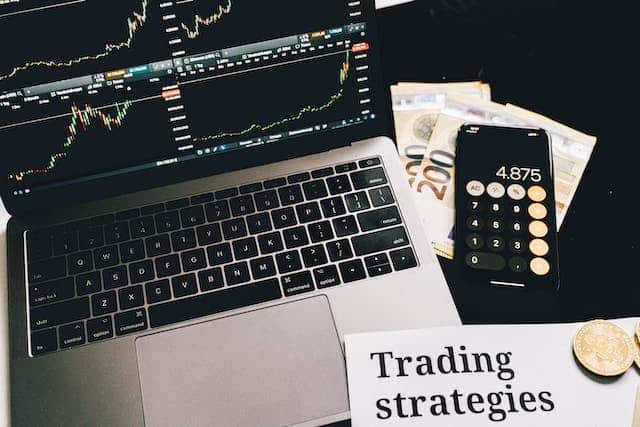In the dynamic world of financial markets, mastering trading strategy parameters is a crucial aspect of achieving success as a trader. These parameters act as the guiding principles that shape and define the effectiveness of a trading strategy. Let’s delve into the intricate world of trading strategy parameters, exploring their significance, common types, and the art of customization.
I. Introduction
Definition of Trading Strategy Parameters
Trading strategy parameters encompass the specific variables and indicators that traders use to make informed decisions about buying or selling assets. These parameters serve as the foundation of a trading strategy, providing a structured approach to navigating the complexities of financial markets.
Importance of Understanding Parameters in Trading Strategies
Understanding and leveraging trading strategy parameters are essential for traders seeking consistent and profitable outcomes. It goes beyond simply executing trades; it involves comprehending the nuances of the market and tailoring strategies to individual preferences and risk tolerance.
II. Common Trading Strategy Parameters
Moving Averages
1. Simple Moving Average (SMA)
The Simple Moving Average (SMA) is a fundamental parameter that smoothens price data to create a single flowing line. It helps identify trends and potential reversal points in the market.
2. Exponential Moving Average (EMA)
Similar to SMA, the Exponential Moving Average (EMA) places more emphasis on recent data, making it more responsive to price changes. Traders often use EMA to capture short-term trends.
Relative Strength Index (RSI)
The RSI is a momentum oscillator that measures the speed and change of price movements. It is invaluable for assessing overbought or oversold conditions, aiding in decision-making.
Bollinger Bands
Bollinger Bands consist of a middle band being an N-period simple moving average and two outer bands being N-period standard deviations away from the middle band. This parameter helps identify volatility and potential trend reversals.
MACD (Moving Average Convergence Divergence)
MACD is a trend-following momentum indicator that shows the relationship between two moving averages of an asset’s price. It’s an excellent tool for identifying trend direction and potential entry points.
III. Customizing Parameters for Individual Goals
Risk Tolerance
Traders must assess their risk tolerance and adjust parameters accordingly. Conservative traders may opt for longer-term indicators, while risk-tolerant individuals might embrace shorter-term strategies.
Time Horizon
Considering the time horizon is vital when selecting parameters. Day traders may focus on short-term indicators, while long-term investors may prefer parameters with a more extended view.
Market Conditions
Adapting parameters to current market conditions is crucial. Volatile markets may require adjustments to avoid false signals, while stable markets might benefit from more consistent parameters.
IV. Backtesting and Optimization
Understanding the Historical Performance
Backtesting involves testing a strategy against historical data to assess its viability. Traders should analyze how chosen parameters performed in various market scenarios.
Fine-Tuning Parameters for Optimal Results
Optimization involves adjusting parameters based on historical performance to enhance a strategy’s effectiveness. Traders should be meticulous in this process to avoid overfitting.
V. The Impact of Market Volatility
Adjusting Parameters in Volatile Markets
Market volatility can significantly impact trading strategies. Traders must be adept at adjusting parameters to navigate through turbulent times and mitigate risks effectively.
Strategies for Minimizing Risk During High Volatility
Implementing specific strategies, such as widening stop-loss orders or reducing position sizes, can help traders manage risks during periods of heightened volatility.
VI. The Role of Machine Learning in Parameter Optimization
Using AI Algorithms to Refine Parameters
Machine learning algorithms can analyze vast amounts of data and identify patterns that may be overlooked by human traders. Integrating AI into parameter optimization can enhance strategy performance.
Benefits and Challenges of Incorporating Machine Learning
While machine learning offers tremendous benefits, traders must also be aware of potential challenges, such as over-reliance on historical data and the need for continuous monitoring.
VII. Real-Life Examples
Case Studies of Successful Parameter Implementation
Examining real-life success stories provides valuable insights into how effective parameter selection contributes to a trader’s success. Learning from others’ experiences can guide traders in refining their own strategies.
Lessons Learned from Failures
Failure is an integral part of the learning process. Analyzing instances where parameters led to unsuccessful outcomes can prevent traders from repeating similar mistakes.
VIII. Staying Informed and Adapting
Continuous Learning and Staying Updated
Financial markets are dynamic, and staying informed is paramount. Traders should engage in continuous learning, keeping abreast of market trends, new indicators, and evolving economic conditions.
Adapting Strategies to Changing Market Conditions
Flexibility is key in the world of trading. Traders must be willing to adapt their strategies to changing market conditions, ensuring relevance and effectiveness over time.
IX. Conclusion
Summary of Key Points
In summary, mastering trading strategy parameters is an ongoing journey for any trader. The ability to understand, customize, and adapt these parameters is crucial for success in the dynamic world of financial markets.
Encouragement for Traders to Experiment and Find Their Optimal Parameters
Traders should approach parameter selection with an experimental mindset, embracing trial and error. Finding the optimal parameters requires patience, perseverance, and a willingness to learn from both successes and setbacks. Learn More
FAQs (Frequently Asked Questions)
- How often should I adjust my trading parameters?
- Adjusting parameters depends on market conditions and individual goals. Regularly assess their effectiveness and make adjustments as needed.
- Can machine learning completely replace human judgment in trading?
- While machine learning is powerful, human judgment remains crucial for interpreting complex market dynamics and unforeseen events.
- What are the common pitfalls in parameter optimization?
- Common pitfalls include overfitting parameters to historical data, neglecting market conditions, and relying too heavily on a single indicator.
- Is backtesting a foolproof method for predicting future performance?
- Backtesting provides insights, but it’s not foolproof. Market conditions can change, and unexpected events may impact future performance.
- How can I stay updated on the latest market trends and indicators?
- Stay informed through reputable financial news sources, attend seminars or webinars, and engage with the trading community for insights and discussions.

